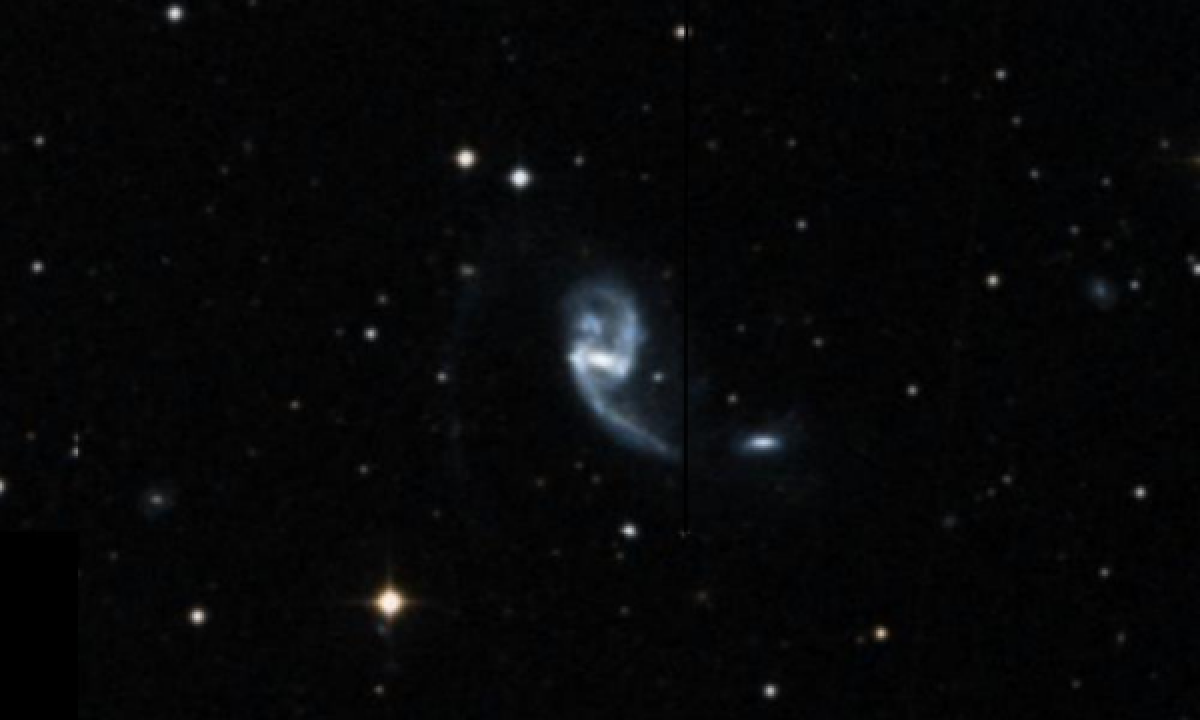The New General Catalogue of Nebulae and Clusters of Stars (abbreviated as NGC) is a catalogue of deep-sky objects compiled by John Louis Emil Dreyer in 1888. The NGC contains 7,840 objects, known as the NGC objects. It is one of the largest comprehensive catalogues, as it includes all types of deep space objects, including galaxies, star clusters, emission nebulae and absorption nebulae.
Know more about NGC
NGC 5996

NGC 5996 is a barred spiral galaxy in the constellation Serpens. The galaxy lies about 125 million light years away from Earth, which means, given its apparent dimensions, that NGC 5996 is approximately 65,000 light years across. It was discovered by William Herschel on March 21, 1784. NGC 5996 forms a pair with a smaller companion galaxy, NGC 5994, which lies at a distance of about 40,000 light years. The galaxy pair is known as Arp 72. The interaction of the two galaxies has created a long and faint tidal tail about 3.8 arcminutes long curving away from the northern edge of the disk of NGC 5996 towards the east and south. A hydrogen bridge has been observed between the two galaxies and hydrogen emission is also observed west of NGC 5994. The interaction has possibly induced star formation activity in NGC 5996 both in the nucleus and the disk, with a star formation rate of 1.43 M☉ per year. The brightest star cluster in the galaxy is estimated to be 5 million years old. The galaxy pair is part of the NGC 5996 Group, which also includes UGC 10044 and IC 1135. One supernova has been observed in NGC 5996, ASASSN-15db, which was discovered when it had an apparent magnitude of 16.7 and it was categorised as a type Ia supernova five days before maximum.
More Images:

Sources:
Wikipedia Page: NGC 5996
NGC 5996 at In-The-Sky website
